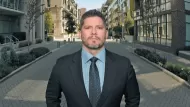Over various blog posts through the last few years, I've shared some of the key steps and stages leading to the eventual unanimous Council approval of Vancouver's EcoDensity Initiative. Since then the EcoDensity Charter and new policies have been changing the way we think about density, green building and site design, and our ecological footprint in and outside of city hall. We've also been moving forward on various EcoDensity actions approved in principle by Council back in 2008.
Over various blog posts through the last few years, I've shared some of the key steps and stages leading to the eventual unanimous Council approval of Vancouver's EcoDensity Initiative. Since then the EcoDensity Charter and new policies have been changing the way we think about density, green building and site design, and our ecological footprint in and outside of city hall. We've also been moving forward on various EcoDensity actions approved in principle by Council back in 2008. For a few examples, here's the report approved by Council removing several key barriers to green design; a report going to public hearing this month that if approved would officially make laneway housing (what we've also called "hidden density") allowable across the city; and another report also going to public hearing that if approved would allow "suites within suites" - secondary suites within apartments and podium rowhouses as flexible rental or family-member housing opportunities (what we've also called "invisible density").
EcoDensity continues to generate considerable interest across the Country and internationally, with many cities accessing the website and requesting presentations or information. The Initiative strikes a chord with cities struggling with the "d-word", and the challenge of educating on the link between "density done well" and reducing a community or city's carbon footprint. The website was always meant to be a permanent record of the Initiative, with every report, video presentation and comment available for study for anyone who has the time and stamina - in essence, our wish was to do some of the "heavy lifting" for any other city with the will to tackle density discussions head-on, as we did.
Recently we've had another unexpected validation of the value of the Initiative, as EcoDensity has been selected for a 2009 Canadian Institute of Planners Award of Planning Excellence, to be presented later this year. Given that we knew that EcoDensity was somewhat of a non-traditional planning exercise, this recognition was indeed a pleasant surprise.
In truth, though, EcoDensity was just one more point in a long evolution of sustainable thinking here in Vancouver, over many generations. From the decision to say no to freeways in the city in the late 60's, to the innovative development of South False Creek in the 70's, to the powerful effect that the City's hosting of Expo 86 had on Vancouver's form and mindset (here's a great new video explaining more about Expo), to the "living first" approach to revitalizing the downtown peninsula (resulting over time in about 50,000 more people living downtown in the last few decades, in a high density, livable, amenity-connected, family-friendly pattern ... all "by design"), to the ground-breaking "Clouds of Change" report that was ahead of its time in North America, to approval of significant targets in the Community Climate Change Action Plan, to being the first Canadian (or is it North American?) city to adopt the "Architecture 2030" Challenge, to continent-leading green design initiatives in our Green Building Strategy through our own local building code, and last but not least, to challenging ourselves to create what we hope will be the greenest athletes village, and perhaps the greenest new neighbourhood built in North America, in time for the 2010 Winter Olympics here in Vancouver.
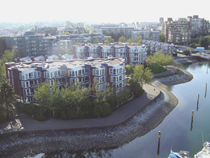
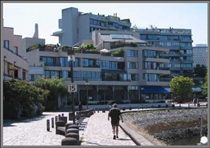
South False Creek
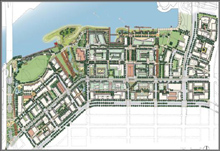

SEFC/Olympic Village
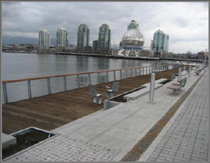
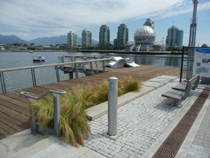
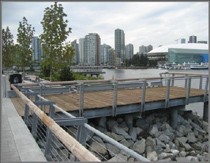
SEFC/Olympic Village
Clearly EcoDensity wasn't Vancouver's first green city initiative, and as recent moves have illustrated, it definitely won't be our last. We clearly still have many things to change, and a long way to go to get to true sustainability.
To wit: since their election late last year, our new Mayor Gregor Robertson and Council have significantly upped the bar once again. Not satisfied with being the North American leader in many aspects of sustainable city building, Mayor and Council have noted how other cities on the continent do better in many aspects, and how global cities significantly outperform us in key areas such as district energy, urban agriculture, cycling, etc. His challenge: for Vancouver to become the greenest city in the world (yes, that's right, not in North America, in the world), by 2020. And Council takes this goal seriously, challenging other cities (in a friendly competition sence) to try their best to out-do us. Its an inspiring challenge, a rallying cry, that I for one also take very seriously. No rolling of the eyes here. It may seem like a long shot for any North American city to really become the global green leader, but like the Mayor, I say we're up for it. And our city, and all others that look to us as a model, will be better for the effort.
With the help of the Mayor's Greenest City Action Team (GCAT), new lists of actions are being generated, and new work has started. The Mayor often uses a metaphor of a green city competition being more like a decathlon than a single event - to be the greenest, we have to be at or near the front in many aspects of green, not just a few. So the GCAT work has many "events" or areas of work.
GCAT once again respectfully builds on past generations of innovation and action (as EcoDensity did). Vancouver has always seemed to move forward this way - as a sailor, I often describe it as "tacking toward the destination". Although new councils frequently come in with new priorities, the big goals, or "destinations" such as sustainability rarely change, and directional changes aren't the "180's" I've seen so frequently in other cities. Initiatives build on each other over time.
Some GCAT actions have already been completed this year. A new community garden has been opened on the lawn of city hall (giving a "spark" to our work over the last few years to achieve 2010 new community garden plots in the city by the Winter Olympics, as we come into the home stretch); a traffic trial on our Burrard Bridge taking a lane away from the car and giving it to cyclists, started this week; a new bike-share program is moving forward; and just last week, Council approved a requirement that 20% of parking spaces in multi-family developments have plug-ins for electric cars, which we as a city are partnering in piloting.
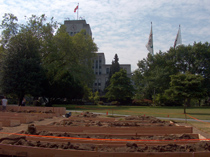
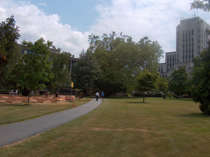
Community Garden at City Hall
Care to race us to being the greenest city in the world? We welcome it - just one more chance to raise the bar on green city-building.

Planetizen Federal Action Tracker
A weekly monitor of how Trump’s orders and actions are impacting planners and planning in America.

Maui's Vacation Rental Debate Turns Ugly
Verbal attacks, misinformation campaigns and fistfights plague a high-stakes debate to convert thousands of vacation rentals into long-term housing.

Restaurant Patios Were a Pandemic Win — Why Were They so Hard to Keep?
Social distancing requirements and changes in travel patterns prompted cities to pilot new uses for street and sidewalk space. Then it got complicated.

In California Battle of Housing vs. Environment, Housing Just Won
A new state law significantly limits the power of CEQA, an environmental review law that served as a powerful tool for blocking new development.

Boulder Eliminates Parking Minimums Citywide
Officials estimate the cost of building a single underground parking space at up to $100,000.

Orange County, Florida Adopts Largest US “Sprawl Repair” Code
The ‘Orange Code’ seeks to rectify decades of sprawl-inducing, car-oriented development.
Urban Design for Planners 1: Software Tools
This six-course series explores essential urban design concepts using open source software and equips planners with the tools they need to participate fully in the urban design process.
Planning for Universal Design
Learn the tools for implementing Universal Design in planning regulations.
Heyer Gruel & Associates PA
JM Goldson LLC
Custer County Colorado
City of Camden Redevelopment Agency
City of Astoria
Transportation Research & Education Center (TREC) at Portland State University
Jefferson Parish Government
Camden Redevelopment Agency
City of Claremont

























